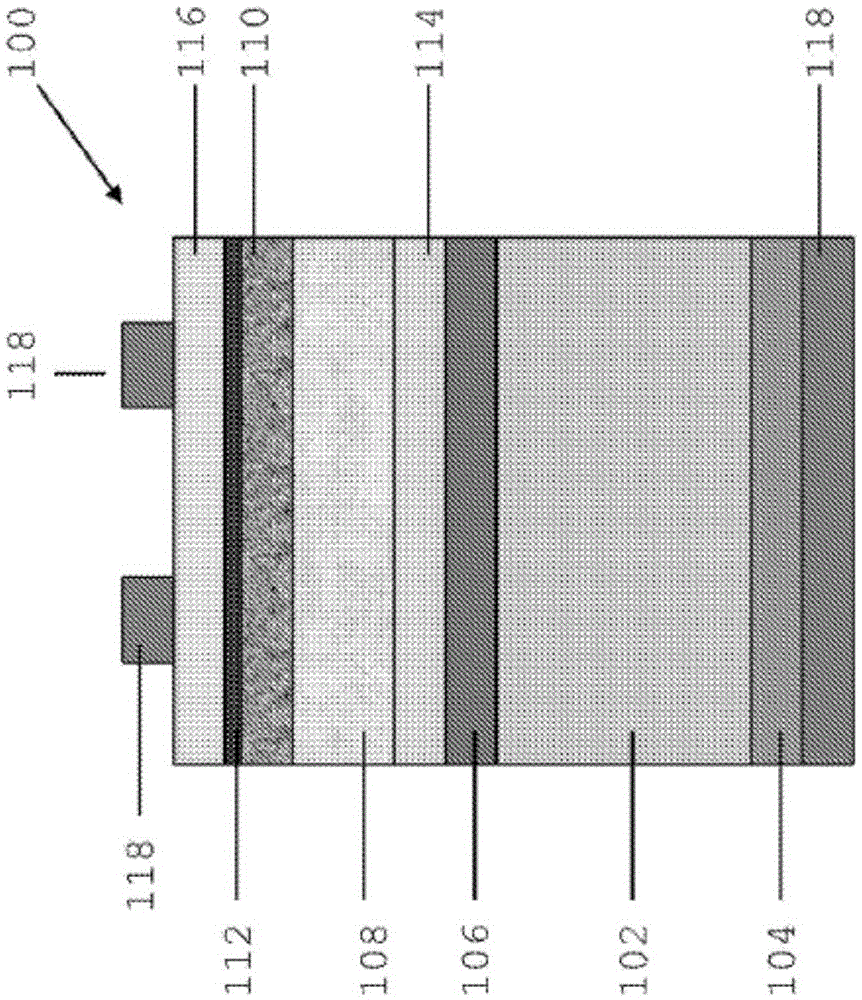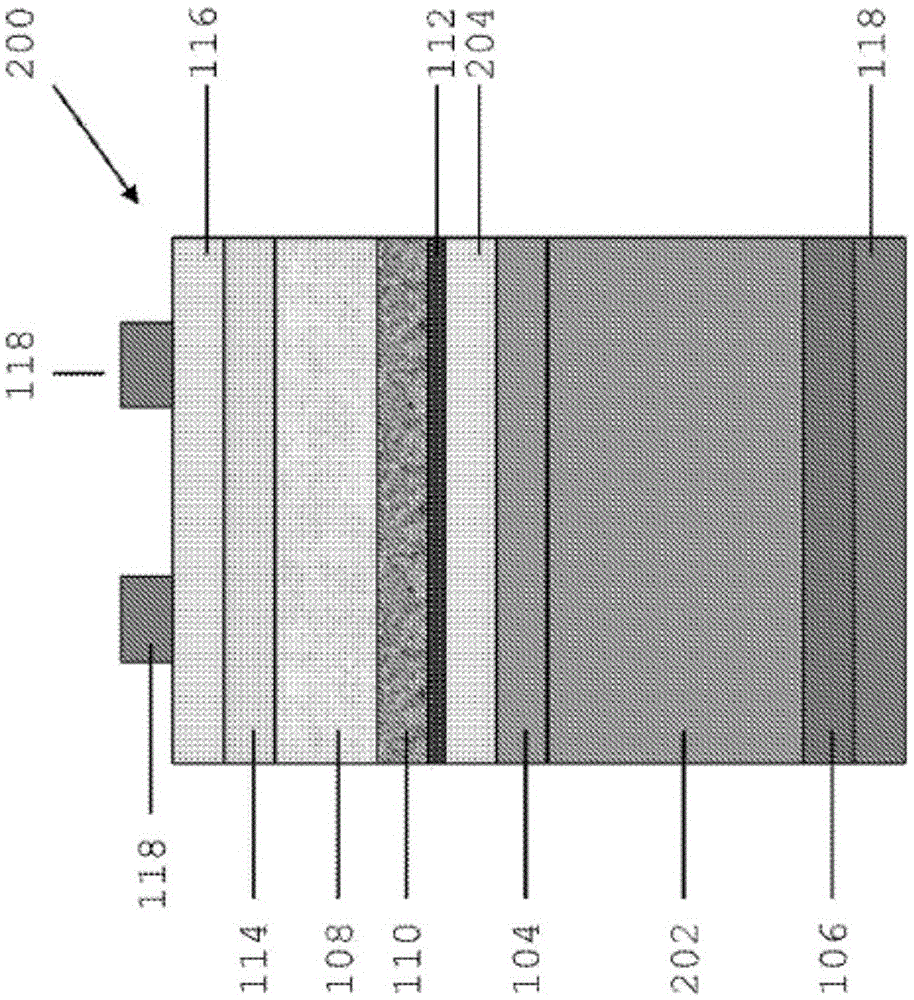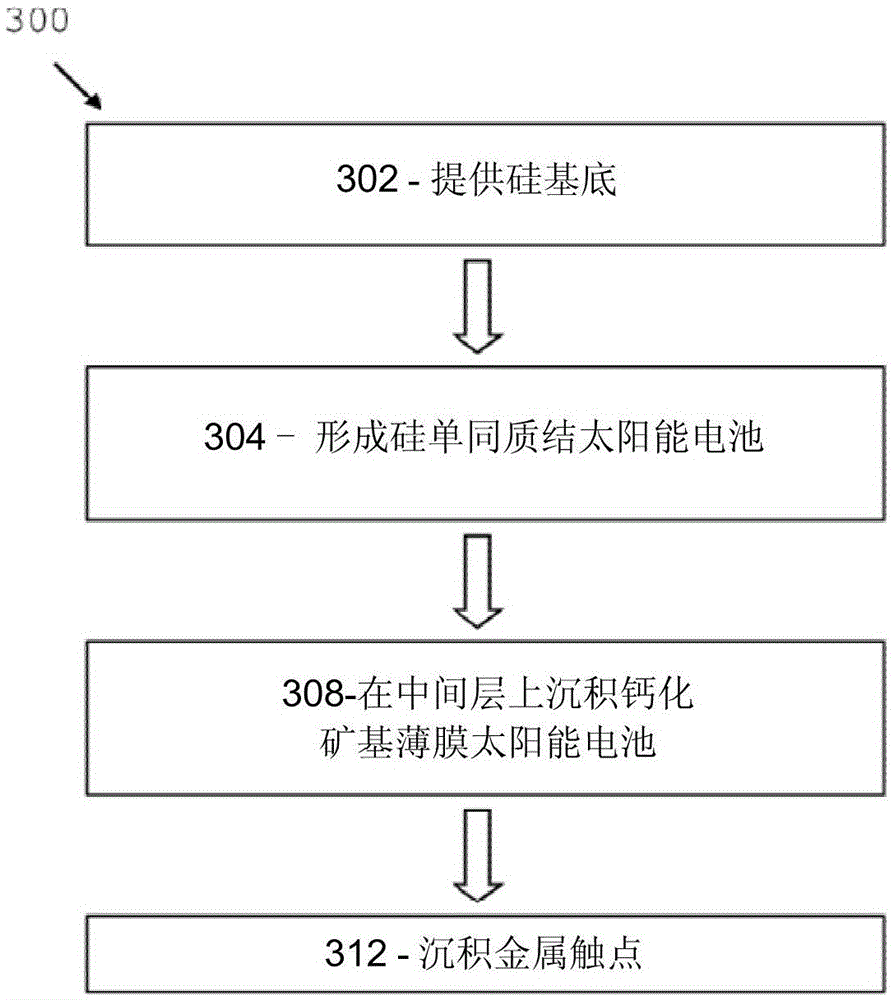A high efficiency stacked solar cell
A technology of solar cells and silicon solar cells, applied in circuits, photovoltaic power generation, electrical components, etc.
- Summary
- Abstract
- Description
- Claims
- Application Information
AI Technical Summary
Problems solved by technology
Method used
Image
Examples
Embodiment Construction
[0046] Embodiments of the invention relate to high efficiency photovoltaic devices consisting of a series of solar cells stacked on top of each other. In particular, an advantageous embodiment of the invention relates to a photovoltaic device consisting of one or more thin-film solar cells comprising an absorber material with a perovskite structure, stacked on top of a silicon single-junction solar cell . In one embodiment, the device is configured as a tandem solar cell with a single homojunction silicon bottom cell and a solid perovskite-based thin film top cell. In these embodiments, the single homojunction cell comprises a silicon p-n junction, which can be achieved, for example, by diffusing n-type dopants into a p-type silicon substrate or vice versa. Alternatively, the p-n junction can be achieved using ion-implantation or epitaxy.
[0047] The single homojunction silicon bottom cell may be a monocrystalline cell realized on a crystalline silicon wafer. The cells may...
PUM
 Login to View More
Login to View More Abstract
Description
Claims
Application Information
 Login to View More
Login to View More - R&D
- Intellectual Property
- Life Sciences
- Materials
- Tech Scout
- Unparalleled Data Quality
- Higher Quality Content
- 60% Fewer Hallucinations
Browse by: Latest US Patents, China's latest patents, Technical Efficacy Thesaurus, Application Domain, Technology Topic, Popular Technical Reports.
© 2025 PatSnap. All rights reserved.Legal|Privacy policy|Modern Slavery Act Transparency Statement|Sitemap|About US| Contact US: help@patsnap.com



